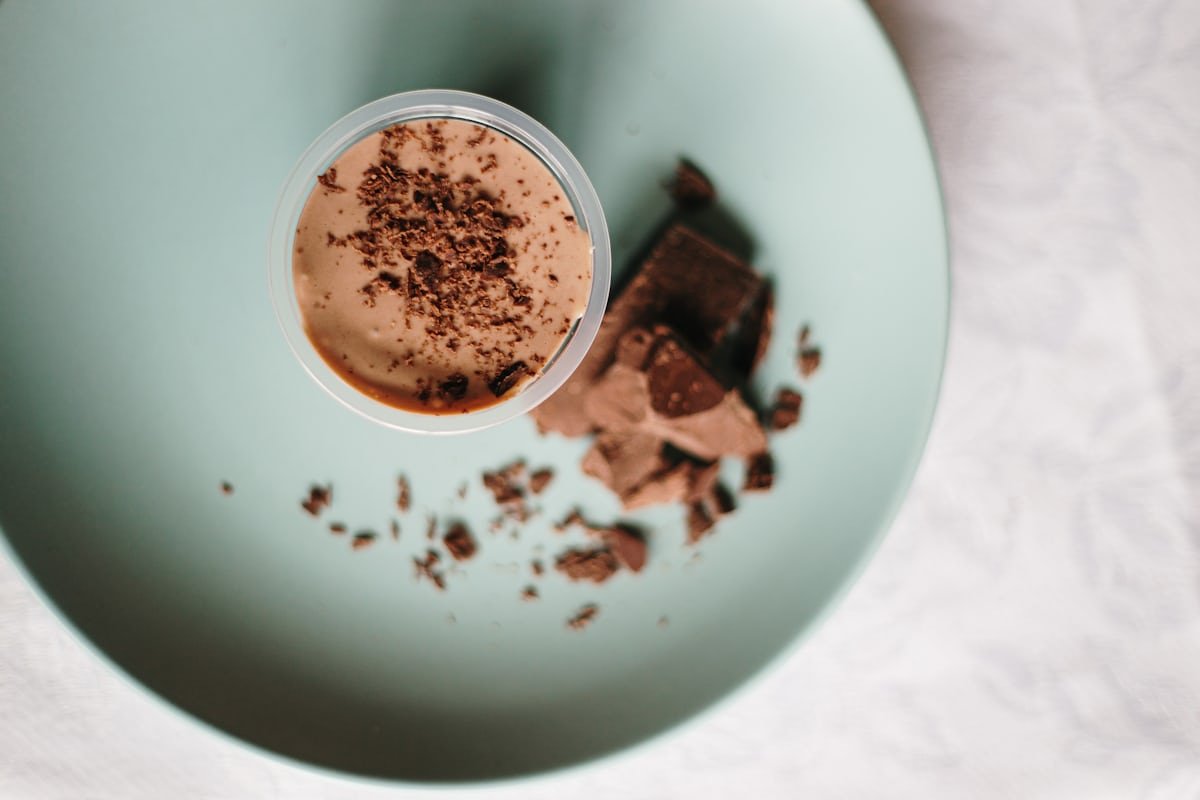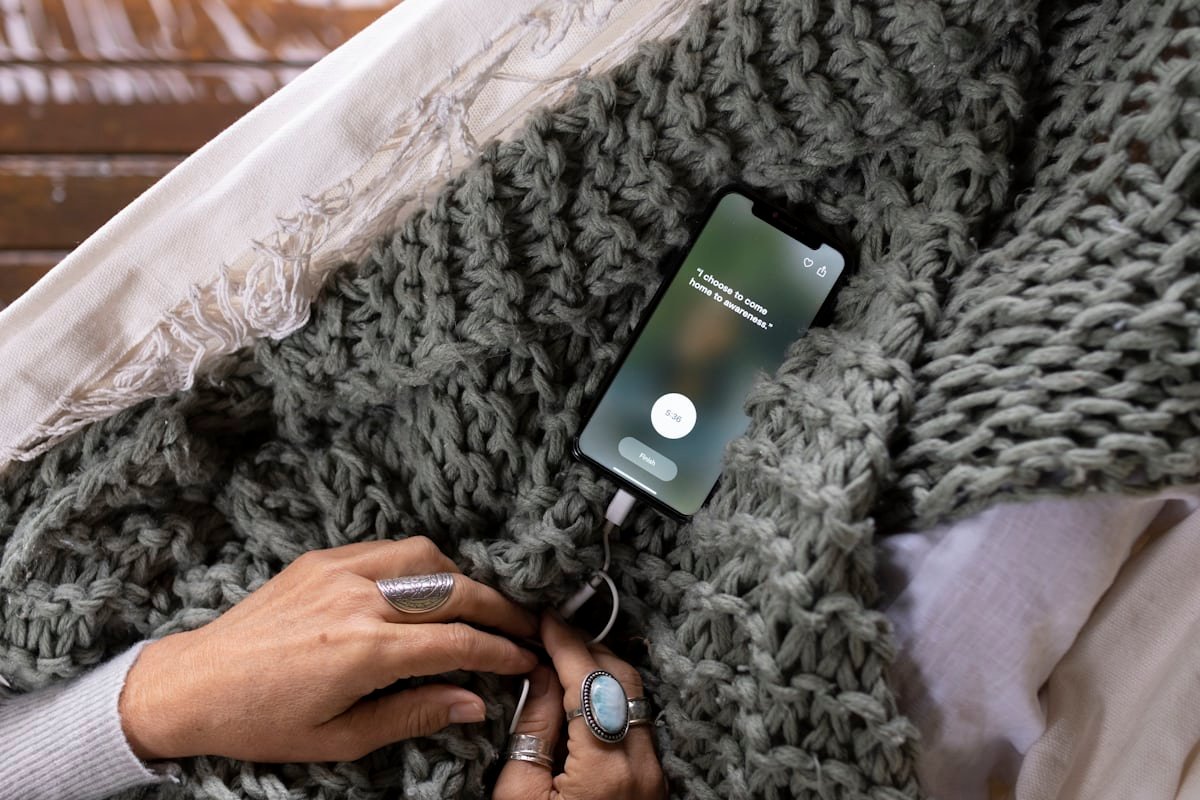Health
Is Chobani Yogurt Healthy? A Nutritionist’s Honest Take

Introduction
Walk down any dairy aisle, and you’ll likely spot Chobani’s colorful cups lining the shelves. Marketed as a protein-packed, probiotic-rich snack, Chobani has become a go-to for health-conscious eaters. But is Chobani yogurt actually healthy, or is it just clever marketing?
In this deep dive, we’ll break down Chobani’s ingredients, nutritional benefits, and potential drawbacks—backed by science and expert insights. Whether you’re a yogurt lover or just looking for a gut-friendly snack, this guide will help you make an informed choice.
What’s in Chobani Yogurt? A Nutritional Breakdown
Chobani offers a wide range of products, from traditional Greek yogurt to oat-based alternatives. Here’s a look at the key nutritional aspects:
1. Protein Powerhouse
Greek yogurt is known for its high protein content, and Chobani delivers:
- Plain Non-Fat Greek Yogurt (5.3 oz): 15g protein
- Flip Varieties (with mix-ins): 10–12g protein
Protein helps with muscle repair, keeps you full longer, and stabilizes blood sugar—making Chobani a solid choice for breakfast or post-workout recovery.
2. Probiotics for Gut Health
Chobani contains live active cultures (like L. acidophilus and Bifidobacterium), which support digestion and immune function. However, flavored varieties with added sugars may counteract these benefits.
3. Sugar Content: The Hidden Catch
While plain Chobani has only 4g of natural sugar (lactose), flavored versions can pack 15–20g of added sugar per serving—nearly as much as a candy bar!
Pro Tip: Opt for plain yogurt and add fresh fruit or a drizzle of honey for natural sweetness.
4. Fat Content: Full-Fat vs. Low-Fat
- Non-fat: Great for calorie control but may lack satiety.
- Whole milk: Contains healthy fats (5–8g per serving) that aid nutrient absorption.
Research suggests full-fat dairy may not be as harmful as once thought and could even support weight management.
Chobani vs. Competitors: How Does It Stack Up?
| Brand (Plain Greek Yogurt, 5.3 oz) | Protein (g) | Sugar (g) | Fat (g) | Probiotics? |
|---|---|---|---|---|
| Chobani | 15 | 4 | 0 | Yes |
| Fage | 18 | 5 | 0 | Yes |
| Siggi’s (Icelandic) | 15 | 4 | 0 | Yes |
| Oikos (Danone) | 15 | 6 | 0 | Yes |
Key Takeaway: Chobani holds its own against competitors, but Fage offers slightly more protein, while Siggi’s has a thicker texture and less sugar.
Potential Downsides of Chobani Yogurt
1. Additives in Some Varieties
Flavored Chobani products may contain:
- Natural flavors (not always transparent)
- Modified corn starch (a thickener)
- Carrageenan (in some oat blends, linked to digestive issues in sensitive individuals)
2. Not All Chobani Products Are Equal
- Chobani Complete (Lactose-Free): A great option for those with dairy sensitivities.
- Chobani Flip (with candy mix-ins): More of a dessert than a health food.
- Oat-Based Yogurt: Lower in protein but good for vegans.
3. Environmental & Ethical Considerations
Chobani has made strides in sustainability (like carbon-neutral pledges), but some critics argue dairy production still has a high environmental footprint.
Expert-Backed Tips for Choosing the Healthiest Yogurt
- Prioritize Plain Over Flavored – Avoid unnecessary sugars.
- Check for Live Cultures – Ensure probiotics are listed.
- Mind the Protein – Aim for at least 15g per serving if using as a meal.
- Consider Your Dietary Needs – Lactose-free, plant-based, or full-fat?
- Pair with Nutrient-Dense Toppings – Berries, nuts, chia seeds, or cinnamon.
Final Verdict: Is Chobani Yogurt Healthy?
Yes—but with caveats. Plain Chobani Greek yogurt is a nutritious, high-protein, probiotic-rich option. However, flavored versions can be sugar bombs, and some additives may not align with a clean-eating approach.
Best Chobani Picks for Health:
✅ Plain Non-Fat Greek Yogurt (highest protein, no added sugar)
✅ Chobani Complete (lactose-free, extra protein)
✅ Oat-Based Plain (for dairy-free folks)
Worst Offenders:
❌ Chobani Flip S’mores (24g sugar—more than a glazed donut!)
❌ Fruit-on-the-Bottom Varieties (high in added sugars)
Conclusion: Is Chobani Yogurt Healthy?
Chobani can be a fantastic addition to a balanced diet—if you choose wisely. Stick to plain versions, watch for added sugars, and enjoy the gut-boosting benefits without the junk.

Health
Is Hot Chocolate Good for Health? A Rich, Nutritious Delight

Hot chocolate is more than a cozy winter treat—it may host surprising health benefits too. This article explores is hot chocolate good for health, from nutrition facts to mindful recipes, based on top-ranking sources.
Why This Article Matters
- Covers key benefits, nutrition, and healthier preparation
- Structured around real SERP headings for SEO and clarity
- Uses simple English, short sentences, and active voice
- Follows readability best practices
What the Experts Say: Health Benefits of Drinking Hot Chocolate
1. Rich in Antioxidants & Flavonoids
Cocoa in hot chocolate contains polyphenols and flavanols—powerful antioxidants. These support heart and brain health, and reduce inflammation.
2. Heart Health & Blood Pressure Support
Studies suggest cocoa can lower blood pressure and improve blood flow. These effects may support cardiovascular health.
3. Cognitive Boost & Mood Improvement
Flavonoids improve circulation to the brain. Cocoa also contains phenylethylamine and serotonin, which can enhance mood and cognition.
4. Weight Management & Blood Sugar Control
Hot chocolate made with high‑quality cocoa may help with feelings of fullness, improve insulin sensitivity, and support weight control.
5. Minerals & Gut Health
Cocoa offers magnesium, iron, zinc, and fiber. These support digestion, immunity, and metabolic balance.
Hot Chocolate Nutrition Facts
- Antioxidants: Cocoa is high in polyphenols, especially flavan‑3‑ols.
- Caffeine & Theobromine: Present in small amounts—boost mood and energy but may impact sensitive individuals.
- Minerals: Cocoa supplies magnesium, iron, zinc, manganese, and more.
- Calories & Fat: Milk and sugar can add calories. Using skim milk or water cuts fat overall.
Healthy Hot Chocolate Recipes
Smart Home-Made Version
Use unsweetened cocoa or high‑percentage dark chocolate. Heat with water or low-fat milk, sweeten lightly with stevia or honey.
Ingredient Tips:
- Use 70%+ cocoa or natural (non‑alkalized) powder.
- Avoid processed mixes with sugars and additives.
- Add spices like cinnamon for flavor and added benefits.
Modified Headings (Adapted from SERP) for SEO Structure
- Is Hot Chocolate Good for Health?
- Benefits of Drinking Hot Chocolate
- Hot Chocolate Nutrition Facts
- Dark Chocolate Health Benefits
- Hot Cocoa Antioxidants
- Healthy Hot Chocolate Recipes
- Potential Risks to Consider
- Conclusion
- FAQs
Potential Risks and Things to Watch
- High Sugar & Calories: Many mixes include sugar and cream. Too much can raise weight and health risks.
- Caffeine/Theobromine: May cause jitteriness or heartburn in sensitive people.
- Kidney Stones: Cocoa has oxalates, which may affect those prone to stones.
Conclusion
Is hot chocolate good for health? Yes—when it’s made mindfully with quality cocoa and minimal sugar. It offers antioxidants, heart and brain support, mood lift, and essential nutrients. But overindulgence, added sugars, or caffeinated blends may outweigh benefits.
Enjoy it wisely. Use unsweetened cocoa, limit sweeteners, and pair it with a balanced diet.
FAQs
1. Can hot chocolate help with weight loss?
Potentially—cocoa helps increase fullness and control blood sugar when consumed in low-sugar versions.
2. Is dark chocolate in hot cocoa healthier?
Yes. Darker cocoa has more antioxidants and less added sugar.
3. How many calories in hot chocolate?
Varies. Basic milk-based versions are higher. Skim or water-based blends reduce calories significantly.
4. Does hot chocolate raise blood pressure?
No. Cocoa flavanols may lower blood pressure and improve vascular health.
5. Best way to make healthy hot chocolate?
Use natural unsweetened cocoa or dark chocolate, heat in water or low-fat milk, sweeten slightly with healthier options like stevia, and add spices for flavor.

Health
How to Check Battery Health on Android: A Complete Guide

Introduction
Knowing how to check battery health on Android helps you protect your device and extend its lifespan. In this guide, you’ll learn easy ways to monitor battery performance Android, check battery capacity Android, use battery health app Android, and explore built‑in and hidden tools—all in clear, beginner‑friendly English.
1. Use the Android Settings: Battery Status and Usage
Most Android devices let you view basic info like battery levels and which apps drain power.
- Go to Settings → Battery or use the search bar to find Battery usage.
- Here, you’ll see how long your battery has lasted, app usage, and temperature (on some devices).
- This helps you monitor battery usage settings, spot power hogs, and improve performance.
2. Hidden Dial Code: Battery Information in Android
Android has a hidden diagnostics menu that can reveal more data:
- Open the Phone app and dial *#*#4636#*#*.
- If supported, choose Battery information to view health, charge level, and temperature.
- Note: Not every device supports this. It works on some Xiaomi, Google, and OnePlus phones, but not always on Samsung.
3. Samsung Phones: Use Samsung Members or Device Care
If the dial code doesn’t work on your Samsung phone:
- Open the Samsung Members app, go to Get Help → Diagnostics → Battery, or:
- Go to Settings → Device Care → Battery, then Battery usage or Power mode.
This lets you check battery health, optimize power usage, and set power‑saving profiles like Optimized, Power saving, or Maximum power saving.
4. Third-Party Apps: AccuBattery, DevCheck, and More
When built‑in tools fall short, free apps from Play Store offer deeper insights.
- AccuBattery tracks your battery’s actual capacity, wear level, and charging habits. The “Health” tab shows estimated health percentage.
- DevCheck gives detailed technical metrics like voltage, temperature, and battery technology.
- Other helpful apps include GSam Battery Monitor, Battery Guru, and Battery HD.
These tools help monitor battery performance Android and see how your battery holds up over time.
5. Android 16 (on Pixel Phones): Native Battery Health Tool
With Android 16, Google has introduced a built‑in battery health feature—but only on newer devices like the Pixel 8a and later models.
- You’ll see battery capacity status labeled Normal or Reduced.
- The Battery Health Assistant automatically optimizes voltage and charging speed to preserve battery longevity—a handy feature to keep batteries in top shape.
This is a major step forward for native battery diagnostics on select Android phones.
6. Bug Report Method (Advanced Users, Xiaomi/POCO Phones)
On some Xiaomi or POCO phones, an advanced method via bug reports provides accurate capacity data:
- In Settings → About phone → Tap “Details info and specs”, then tap the CPU section ~5‑6 times to generate a bugreport.txt.
- Inside, search for “Battery Capacity” to compare estimated capacity to the design capacity.
For example, 4600 mAh vs. 5000 mAh indicates ~92% health.
This approach is technical but very precise.
7. Tips to Maintain and Protect Your Battery Health
To prolong battery life and optimize performance:
- Aim to keep battery levels between 20% and 80%.
- Avoid charging to 100% and leaving your phone plugged in for long periods—this can accelerate wear.
- Avoid exposure to extreme temperatures—both heat and cold damage battery health.
- Use built‑in optimization tools like Device Care on Samsung devices to manage apps and maintain efficiency.
- Regularly check usage settings and close heavy background apps to preserve energy.
These steps help you monitor battery performance Android and maintain long-term health.
Conclusion
Checking how to check battery health on Android is easier than you think. Use built-in tools like Settings → Battery, hidden codes like *#*#4636#*#*, Samsung’s Device Care, reliable third-party apps such as AccuBattery and DevCheck, or the advanced bug‑report method on Xiaomi/POCO phones. Newer Pixel phones on Android 16 now have native battery health diagnostics. Combine these tools with healthy charging habits and usage settings to keep your battery running strong for as long as possible.
FAQs
1. Can all Android phones show battery health?
No. While Settings and app‑based methods work broadly, hidden codes and Pixel’s native health tools aren’t available on every model.
2. Is AccuBattery reliable?
Yes. AccuBattery tracks estimates of current and original capacity over time, giving a good indicator of actual battery wear.
3. What does ‘Reduced’ mean in Pixel’s battery status?
On Android 16 (Pixel 8a+), “Reduced” means the battery holds less capacity than when new, signaling possible wear.
4. Why doesn’t ##4636## work on my phone?
This dial code isn’t supported by all manufacturers or carriers, especially on some Samsung models.
5. How often should I check battery health?
Check monthly or when you notice decreased battery life. Using preventive tips and regular monitoring helps prolong how long your battery stays healthy.

Health
Can I Buy Food with My Health Pays Rewards Card? Understanding Card Use

Using your Health Pays Rewards card often raises the question: “can i buy food with my health pays rewards card?” In this article, we explore whether food purchases—especially groceries—are allowed, and explain Health Pays Rewards card usage, eligible purchases, and how the program works.
What Is the Health Pays Rewards Program?
The Health Pays Rewards program gives members funds on a prepaid card for completing healthy activities like wellness visits, screenings, or immunizations. The card acts like a debit card and is not a credit card—it won’t affect your credit score.
Where Can You Use the Health Pays Rewards Card?
Members can use their card at select retailers, most commonly Walmart, Sam’s Club, and Hy‑Vee, for everyday items—not including alcohol, tobacco, firearms, gift cards, lottery tickets, or cash withdrawals.
You can also use your rewards toward utilities, telecommunications (phone bills), transportation, education, childcare, housing/rent—but not mortgage payments.
Can I Buy Food—Specifically Groceries—with the Health Pays Rewards Card?
Good news: Yes, at approved locations like Walmart or Hy-Vee, you can buy groceries with your card. Everyday food items—especially healthy ones—are eligible.
However, there are noteworthy limitations:
- Not all food items qualify—eligible purchases often focus on healthy options, and items like soda, candy, or junk food may be restricted.
- Program definitions vary by provider, so the exact list of eligible food items may differ. Always check your plan’s guidelines.
How to Confirm Eligible Food Purchases
To confidently use your card for groceries:
- Check your plan documentation—look for sections on eligible purchases or “healthy foods.”
- Log into your member portal to view your reward balance and eligible purchase list.
- Call customer support if unsure what food items qualify.
Using Your Card at Checkout
When shopping:
- Inform the cashier you’re using the Health Pays Rewards card for eligible items.
- Separate eligible and non‑eligible items, if needed, and pay for ineligible items with another method.
- Save receipts to verify proper charges—especially helpful if issues arise.
Health Pays Rewards Program Benefits
Using the card wisely gives you multiple benefits:
- Encourages healthy behaviors, like preventive care and immunizations.
- Helps with daily needs: groceries, utilities, childcare, rent, education, and transportation.
- Provides real, flexible value—if your plan allows food purchases, you can offset grocery costs.
Summary Table: Health Pays Rewards Card Usage
| Usage Area | Allowed? |
| Grocery food (healthy items) | Yes (at select retailers) |
| Unhealthy food/snacks | Often not eligible |
| Restaurants/takeout | Not eligible |
| Utilities, rent, childcare, etc. | Yes, for approved categories |
| ATM or cash back | Not allowed |
| Alcohol, tobacco, firearms | Not allowed |
Conclusion
Yes—you can buy food with your Health Pays Rewards card, but only under specific conditions. If your plan allows grocery purchases—and particularly healthy items—you may use your card at participating stores like Walmart or Hy‑Vee. However, restrictions apply, and program rules vary by provider. Always consult your member portal or provider documentation before shopping.
FAQs
1. Can I use my Health Pays Rewards card at any grocery store?
No. Typically, only retailers like Walmart, Sam’s Club, or Hy‑Vee accept it. It depends on your plan.
2. What happens if I mix eligible and ineligible items at checkout?
You’ll need to split the transaction or pay ineligible items using another method. Inform the cashier ahead.
3. Are restaurants or takeout food eligible?
No. These are generally not covered by Health Pays Rewards cards.
4. Do rewards dollars expire?
Yes. Funds may expire after a certain time or upon termination of coverage—often within 90 days or 365 days.
5. How do I check my balance or eligible items?
Use your health plan’s online portal or mobile app, or call member services.

-

 Blog4 weeks ago
Blog4 weeks agoHow to Start a Health Blog: A Step-by-Step Guide for Beginners
-

 Health2 weeks ago
Health2 weeks agoMega-Personal.net Health Archives: Ultimate Guide to Wellness
-

 Health1 month ago
Health1 month agoHealthy camping recipe ideas: Nutritious food for great out
-

 Business4 weeks ago
Business4 weeks agoHow to Start a Home Health Business: A Complete 2025 Guide
-

 Health2 months ago
Health2 months agoHealthy Camping Recipes: Nutritious, Delicious Meals for the Outdoors
-

 Health3 weeks ago
Health3 weeks agoHow to make a manicotti: a step-by-step guide for a classic Italian dish
-

 Food3 weeks ago
Food3 weeks agoWhat Foods Are Good for Vaginal Health?
-
Blog2 months ago
Hello world!
